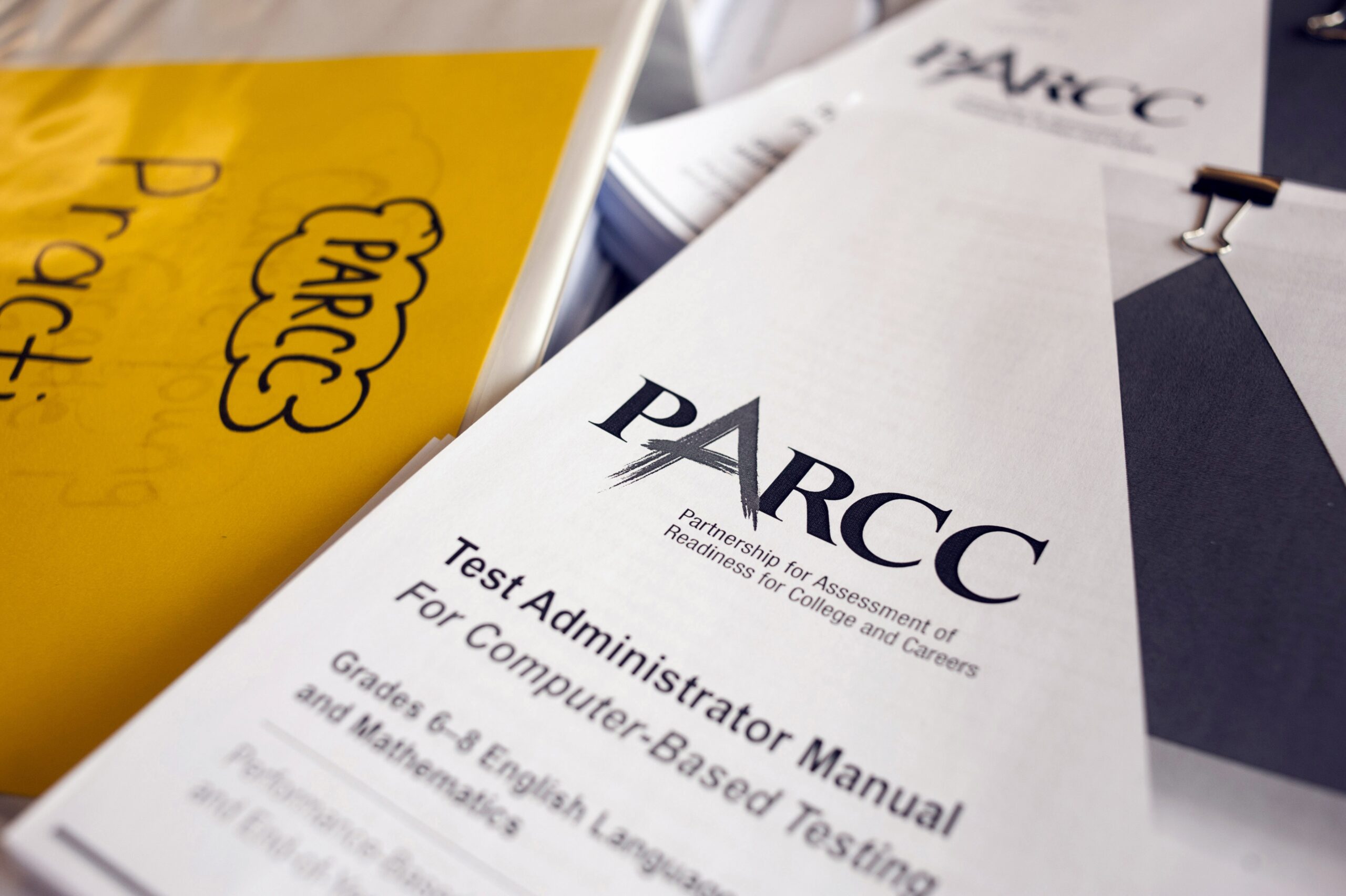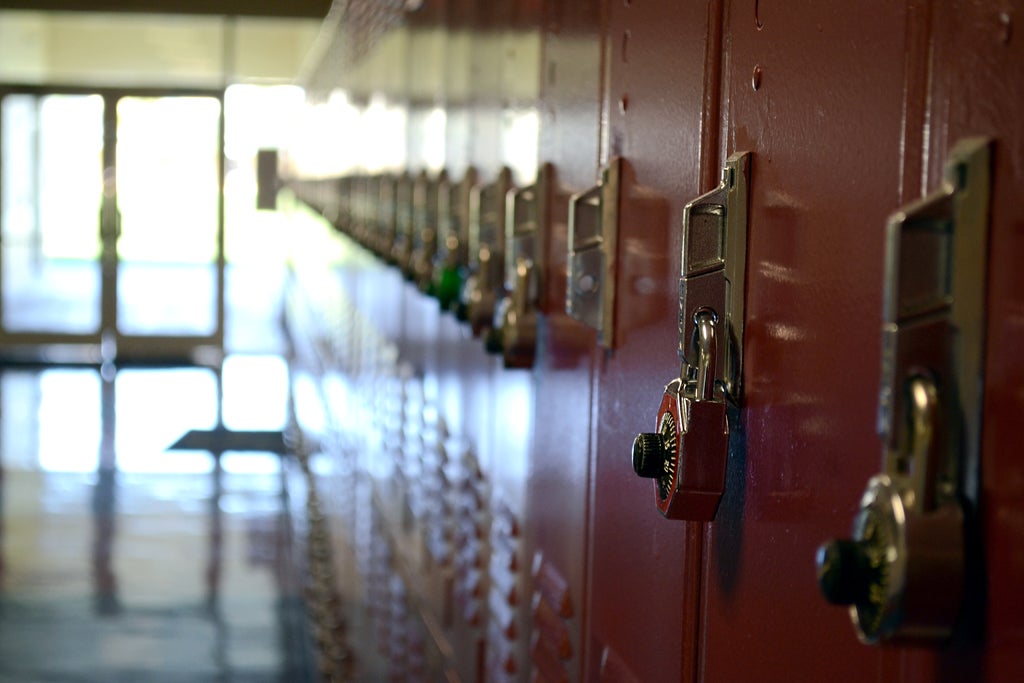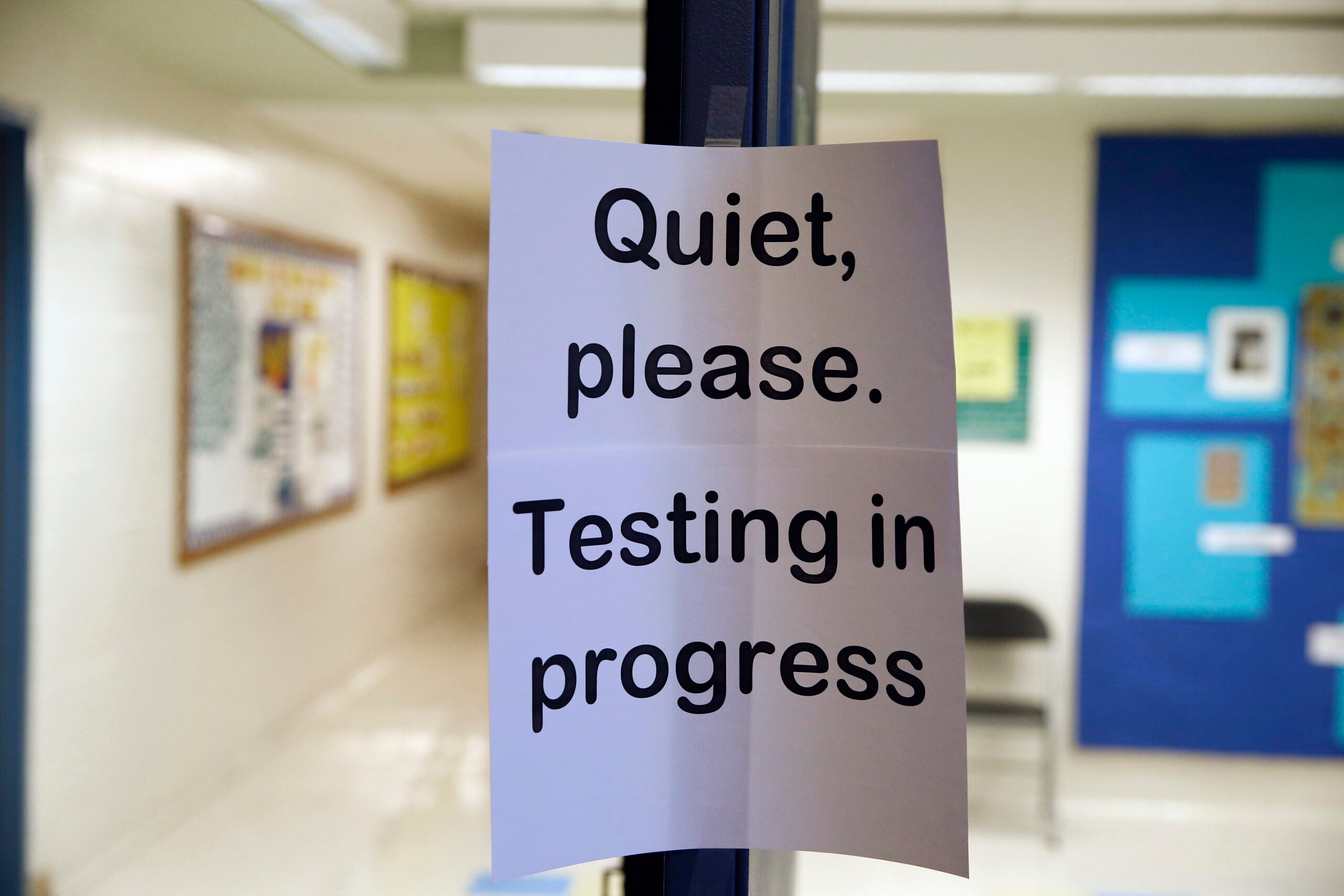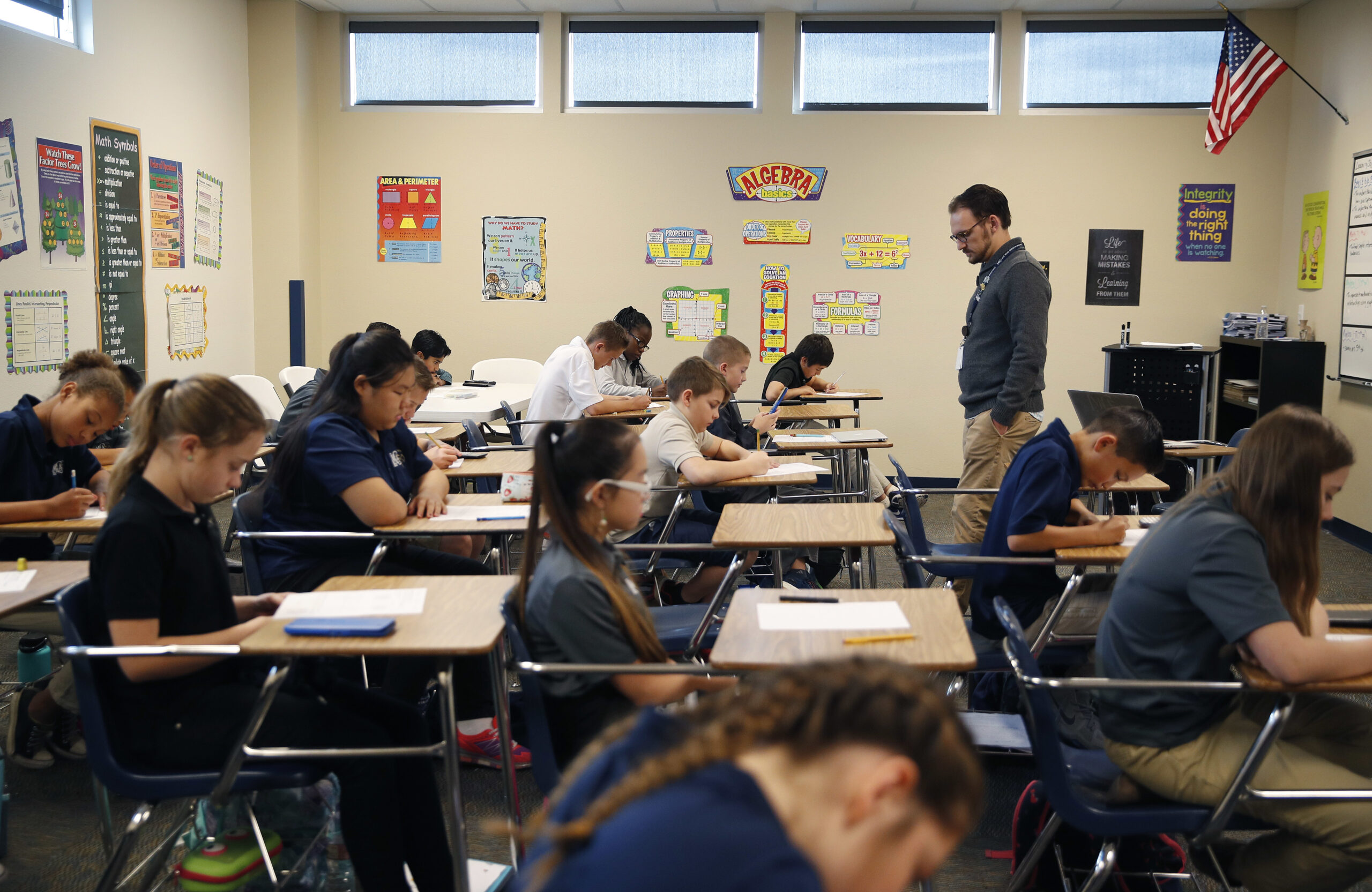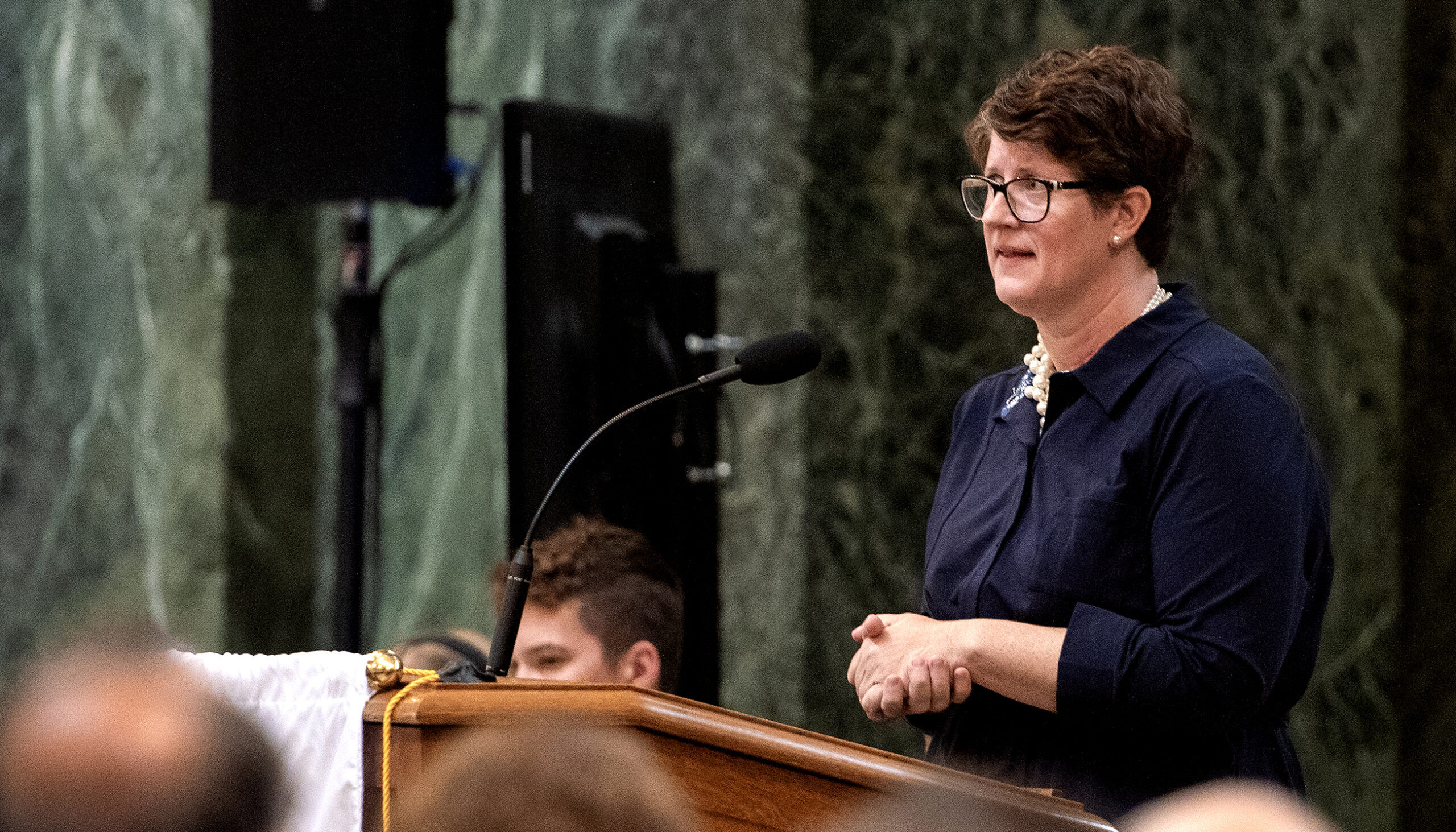Last week the state Department of Public Instruction released a report last week revealing that student test scores in math and reading declined slightly during the last school year, after several years of increases.
Wisconsin Public Radio’s “The Morning Show” host Kate Archer Kent recently spoke with Deputy State Superintendent of DPI Mike Thompson about the report.
The interview has been edited for brevity and clarity.
News with a little more humanity
WPR’s “Wisconsin Today” newsletter keeps you connected to the state you love without feeling overwhelmed. No paywall. No agenda. No corporate filter.
Kate Archer Kent: The report showed that less than half of Wisconsin’s students were proficient in reading and math last school year. What can we attribute this to?
Mike Thompson: It’s a statewide assessment designed to provide information about what students know in core academic areas (English, language arts, mathematics). It doesn’t measure everything that goes on in a school, but it does give a knowledge indicator.
And we have seen a slight decrease in those particular areas. Some good news where mathematics scores went up slightly around those particular pieces, but those scores have been relatively stagnant over the last several years.
KAK: What is going on here that student test scores just aren’t improving?
MT: We have to remember we’re educating all our children. Every kid in this state is eligible for free public education. And our student population has some challenges. We have an increase in poverty in our state over the last decade. More than half our school districts have children living in poverty. We have a homeless rate in our state that has just skyrocketed over the years, so there are a number of challenges in our state … and school districts are striving each and every single day to get all those kids to achieve.
Sometimes what happens is we use these test scores as a hammer — we must change, we must do something differently. And quite frankly we have to use them as a flashlight to be able to look at how we modify the system so all kids can achieve. It’s a it’s a long-term process.
KAK: Test scores are still significantly different between African American and white students. What could DPI be doing to help schools address these achievement gaps?
MT: Clearly the education system does not work for all kids at all times, and we need to change that.
For children of color we clearly have to diversify our workforce so they see people like themselves in our school system. Our student population right now is about 30 percent of color, our adult population is about 19 percent of color, our teachers are certainly in the single digits. We have to be able to make schools places where all kids feel welcome. That’s one thing we can start to do.
Districts are working on creating relationships with kids, a key to making kids feel that they’re connected to school, that they belong there. It’s really difficult to teach kids when they don’t come to school.
KAK: State lawmakers approved a $500 million increase in spending for schools, almost $100 million in new dollars for special education costs. How will those dollars get put to work?
MT: The budget was an equity budget that really looked at some of the challenges schools are facing. This is really the first increase in special education funding in over a decade.
And when you talk about that increase in special education funding it went from about 25 percent reimbursement for the services provided to kids to 30 percent. So a nickel on the dollar. Those are services that school districts are required to provide under federal and state law for kids.
Those costs have increasingly gone up over the years, so when the costs go up in the area of special education, the amount of money districts have for general education goes down unless the state picks up part of that. This is a step in the right direction.
KAK: So the schools have been absorbing those extra costs?
MT: Absolutely. And those costs are necessary costs and the right thing to do for our special needs kids. But it comes from the general education fund which is what makes school a good place for all kids. And when you start pulling from one, you really diminish the ability of schools to meet some of the other needs. This was a huge need area in our state.
KAK: DPI was awarded $6.5 million in grants to help schools with mental health services, how will they use the funding?
MT: Schools will have some latitude in how they use the funding. It doubled the amount of money that was available for mental health aid. And it’s a very critical piece that school districts need. I’ve had many principals tell me, “If you give me a dollar, I’ll spend 90 cents of that on mental health needs of kids.”
We believe over the next year about 120,000 kids will get access to mental health services that they would not have been able to get access to without this funding.
Editor’s note: The headline to this story has been updated to state Mike Thompson is deputy superintendent of the Wisconsin Department of Public Instruction.
Wisconsin Public Radio, © Copyright 2025, Board of Regents of the University of Wisconsin System and Wisconsin Educational Communications Board.

